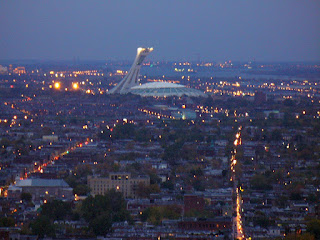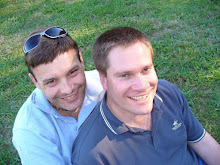For five years, I passed through Paddington Station while commuting to and from work in London. The station's name recalled childhood memories of my favourite Michael Bond books chronicling the life and adventures of Paddington Bear. He was so named after being found huddled in a corner of Paddington Station, fresh off the boat from Lima, Peru.
In 2005, Garry and I retraced the steps of London's most famous bear by spending two days in Lima. At the time, we’d taken a short sabbatical while relocating to the UK to live and work. Our time in Peru also kicked off our first visit to the South American continent. We ultimately spent a month exploring many of the continent's classic highlights before flying out of Buenos Aires.
We flew into Lima mid-evening on 27 October after departing Toronto and transiting via Miami earlier in the day. With a solid night's sleep under our belt, we spent our first day in South America exploring Lima's old colonial district on foot. It’s an area full of colourful plazas and ornate churches.
The Catedral de Lima, overlooking Plaza Mayor de Lima, was particularly impressive. It's an incredibly ornate building styled in a classic gilded Catholic manner. It was built between 1602 and 1797. Surprisingly, it's actually the third Cathedral of Lima, built in this location.
This "modern" edition incorporates a range of hidden architectural quirks designed to improve its earthquake resilience. For example, the ceiling is supported by Gothic ribbed vaults made of wood and stucco rather than stone, thus reducing the weight that's carried by the surrounding walls.
At one point we stumbled upon a religious procession carrying an image of the crucified Christ. The framed icon was being paraded down Jirón de la Unión, a pedestrian boulevard, accompanied by a loud brass band and a crowd of devotees. I’m pretty sure it was part of the festival of El Senor de los Milagros.
The month of October is given over to this festival every year. It dates back to the 17th-century. A slave from Angola drew on the walls of his hut, the image of Christ. An earthquake struck soon after. All the houses in the village were destroyed, except for the hut of the slave, whose image on the wall was intact.
These days a venerated replica of the image is carried around town by believers in a 24-hour procession across Lima. Key procession dates are 18, 19 and 28 October. We were in Lima on the twenty-eighth. However, the icon we saw wasn’t the original replica, just a framed copy.
Elsewhere, economic inequality was certainly more visible in Lima than it is in Australia. For example, a ramshackle slum on the nearby slopes of Cerro San Cristóbal caught my eye as we approached Plaza Mayor de Lima.
Watching the changing of the guard outside the Presidential Palace was a spectacle that almost defies description. Imagine brilliant red, yellow, and blue costumes, a jazzy brass band, plenty of goose-step marching, and a ring of heavily armed police officers keeping the crowd at a distance. Picture this, and you have a sense of the drama that unfolds in central Lima daily.
The elegantly ribbed yellow stone facade of the Basílica and Convent of San Francisco was another memorable highlight. This church, together with the Sanctuary Nuestra Señora de la Soledad and the Church del Milagro, anchors one of the more welcoming and artistic corners in Lima's old city district (thank you, Wikipedia, for such a delightful description of the local area).
We spent more than an hour exploring the Basilica's grounds, including the cloister gardens and the Chapter House lined with intricately carved, dark-panelled chamber benches. We took a guided tour through the complex. An enormous painting of the Last Supper by the Jesuit Diego de la Puente was a particularly compelling highlight of our tour. This painting, completed in 1658, fills the rear wall of the church's rectory dining room.
Our tour also stopped to view the convent's library. Its contents are as old as they look. For example, the first Spanish dictionary and rare Incan texts predating the Spanish conquest form part of the library's 25,000-volume collection.


However, the amazing library and art aren’t the main reasons to visit the convent. The key attraction here is the catacombs! They believe there are anywhere in the range of 25,000 to 75,000 bodies stored here. The bones are arranged by type and stacked into weirdly gruesome arrangements. This includes a well with skulls and long bones lining its walls in an orderly pattern.

We finished our walking tour with a quick stop at Plaza de San Martín. This plaza was inaugurated in 1921 on the occasion of the centenary of the Independence of Peru. It's dominated by a statue of General
José de San Martín on horseback.
The buildings surrounding it were once the central gathering place for members of Lima's elite. At their height, images of these buildings were synonymous with Lima. Although truth be told, an outdoor gallery of artwork we discovered near our hotel on our final night in Lima was far more memorable. The gallery was part of a lively pop-up night market on Calle Virgen Milagrosa, a pedestrian street bisecting Parque Kennedy in Miraflores.
For our first two nights in Lima, we based ourselves at the Sheraton Lima Hotel & Casino in the centre of town. I used Starwood loyalty points to score us a couple of free nights. Despite being a freebie, the hotel gave us a phenomenal room. The view was incredible. We looked over the Palacio De Justicia De Lima (Palace Of Justice), Peru's Supreme Court building.
The hotel's central location also meant we were never more than a few blocks from the city's old district and its classic tourist sights. We then stayed in a hotel on the city's coastal fringe on our final night in Lima. Here we joined the tour group that guided us through our next two weeks in Peru.
We recommend the goat!
While in town, we were bold enough to try a few local delicacies, including goat (delicious), alpaca (tough and tasteless), and ceviche, a marinated dish of raw fish that rapidly became our favourite meal (Garry says it's more my favourite than his). In keeping with our cultural theme, we also booked ourselves seats at the cabaret performed each Friday evening in our hotel. The show was a flurry of colourful costumes and amazing dance moves from almost every South American genre.
The artefacts aren't the only fakes
Sadly, our most definitive memory of Lima was a classic tourist rip-off. For our last full day in town, we visited the infamous Gold Museum, home to one of Peru's most notorious scams. Several years ago, almost all of the museum's star attractions were found to be fake. They say the items now on display are genuine. They're certainly beautiful pieces, but one can't help wondering if the local artisans have simply been hard at work again.
However, it appears that we were victims of the museum's latest scam. After paying our admission fee, the cashier gave us our change using fake currency. This was no accident as the man insisted on rounding up the final sum, thus enabling him to hand over fresh, clean notes. Afterwards, our taxi driver became most upset with us as we tried to pay our fare! We thought he was trying to pull a scam by refusing our money until a shop assistant at Pizza Hut also rejected our money!
In hindsight, the forgery was obvious. After the second rejection, I noticed that the small "holographic dots" on our fake notes were peeling away from the paper. To add insult to injury, a few were already stuck to my hand. A handy $20 lesson in local forgery printing skills.
Our final afternoon in Lima was spent watching hang-gliders soaring over the Pacific Ocean in Miraflores, near El Parque del Amor (the Park of Love). This iconic park is renowned for its statue of intertwined lovers called The Kiss, or El Beso, by Peruvian artist Victor Delfín. This is definitely not Victorian England!
We were surprised to discover that Lima actually sits on a plateau. Access to the coast is blocked by the cliffs of Chorrillos, towering more than 70 metres above the shoreline. Along the rim, a scenic walkway called El Malecón follows the Pacific coast for almost 10km.
We emulated the more active locals and walked the curving clifftop pavements for several kilometres, starting at the bustling outdoor terraced, cliffside mall of Lacomar, passing through El Parque del Amor and finishing at Faro del la Marina, a blue and white striped iron lighthouse in Parque Antonio Raimondi.
Not far from El Parque del Amor was the hotel where we met our tour group, including Gwen, our guide for the next two weeks. She was an English lass, full of beans, who took the time to connect with everyone on the tour, making it a most memorable experience. Garry and I took her out for a night on the town the last night the group was together. As the evening wore on we soon discovered that Gwen loved to tear up the local dancefloor with some rather fancy moves.





















































